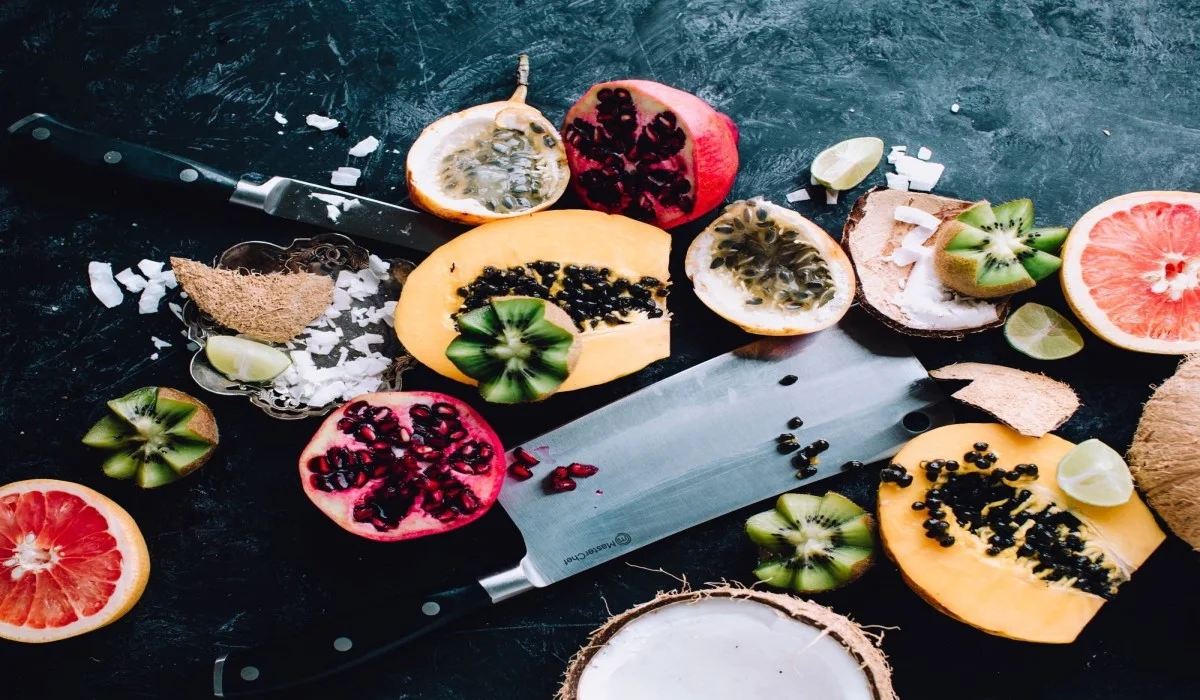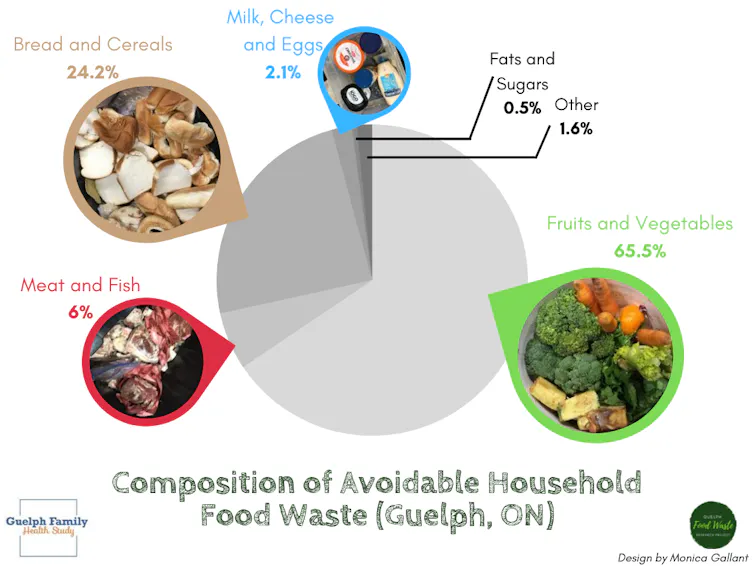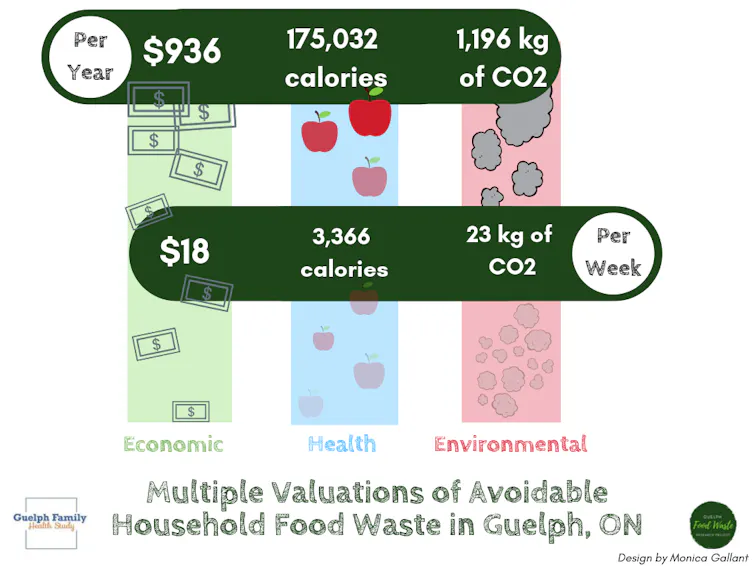
How to reduce your food waste
The average household in our study generated about three kilograms (or almost six pounds) of avoidable food waste per week. Fruits and vegetables made up the majority of this waste, followed by bread and cereals.
Food waste is costly — and not just dollars and cents. Food waste also has significant environmental and health implications.
Some estimates suggest that up to 50 per cent of food waste in Canada is generated at the household level. So what does this mean for an individual family?
To answer this question our team of researchers from the University of Guelph investigated the purchasing, consumption and wasting habits of families with young children.
From each family, we collected household waste — including their recycling, garbage and organics — over a four-week period.
We then separated and weighed each individual item. Food items were classified as being either avoidable (edible at some point) or unavoidable (think banana peels and chicken bones).
A WASTED HEALTH OPPORTUNITY
The average household in our study generated about three kilograms (or almost six pounds) of avoidable food waste per week. Fruits and vegetables made up the majority of this waste, followed by bread and cereals.

Composition of household waste. Author provided
To understand what three kilograms of avoidable food waste costs us, we examined the nutritional losses, dollar value and environmental impact of what was thrown away.
In our study, one week of avoidable household food waste represented:
3,366 calories. This is the recommended daily caloric intake for 1.7 children or 2.2 adults. That is equivalent to five adult meals, or seven child meals wasted per week.
$18.01. An extra $18 a week in a family’s pocket could go a long way. Over a year, that’s almost $1,000!
23.3 kilograms of CO2. This equates to 1.2 tons of carbon dioxide per year — one quarter of the emissions from a car being driven for a year, or 2.8 barrels of oil consumed.
5,000 litres of water. Consider that the average five-minute shower uses 35 litres of water. Wasted avoidable food items represented close to 143 showers per week.
The wasted food also represented significant losses of fibre, magnesium, calcium, vitamin D, vitamin B12, vitamin C and vitamin A — all nutrients that are often consumed below recommended intake levels. In this case, wasted fruits and vegetables represented a significant missed health opportunity.

Author provided
While the statistics are concerning, the good news is that families can take simple steps to prevent food waste. Here are our top four tips for preventing household food waste:
PLAN YOUR MEALS
Planning your meals is one of the most effective ways to prevent food waste. By keeping your family organized, you can also help to maintain healthy eating habits and save money on groceries.
As a first step, keep an ongoing list on the fridge. Jot down items as you run out of them or while you are meal planning.
Next, inspect your fridge and pantry and base your meals around foods that need to be used up first. Bananas getting spotty? Plan to make banana bread, or peel and throw them in the freezer to use in breakfast smoothies on a busy morning.
Finally, consider your schedule for the upcoming week. If it looks like a busy week, it’s OK to eat out. Just adjust your meal plan and buy less food. Remember, you don’t have to plan every meal. Planning for four or five meals will allow for flexibility and unexpected leftovers.
GET THE WHOLE FAMILY INVOLVED
Involving the whole family is a win-win. Children learn essential food skills and are more likely to eat the meals you prepare because they’ve helped make it. When it comes to the meal itself, allow family members to serve themselves, so everyone gets the portions they want.
However, picky eaters can be hard to plan for. Research shows that it can take 10 to 15 exposures for a child to accept new foods. So, start with small portions and offer more when your child is interested. And get creative with those barely-touched portions! Leftover veggies can be used in a stir-fry and purees can be frozen and added to pasta sauce or soup. Fruit can be saved for tomorrow’s snack or be frozen for smoothies.
STORE YOUR FOOD TO LAST
The way we store our food can have a big impact on how long it lasts. It is important to make sure your fridge is set between 0-4C to ensure your food’s utmost freshness. Keep milk and other dairy products out of the door where the temperature is the warmest.
Did you know that the adjustable levers on the produce drawers in your fridge change the humidity levels? If your refrigerator has these levers, set one to high and one to low. The high humidity drawer prevents air from coming in and is the best place for veggies that wilt like carrots, leafy greens and peppers. The low humidity drawer is an ideal home for fruits and vegetables like apples, mushrooms, oranges and grapes.
ROCK THE FOOD YOU'VE GOT
Our team has created a free cookbook to help make the most of the food you buy. With busy families in mind, the recipes in our cookbook are not only tasty but are also quick and easy to prepare.
Our cookbook makes meal preparation easy with recipes that make two meals at once. The instructions are flexible by offering plenty of ingredient options to help you make use of the foods you already have.
Finally, many of the recipes use whole ingredients, from top to bottom, so you won’t be left with half a leek that eventually finds its way to the compost.
VIDEO: MAKING FOOD LAST WITH BEESWAX

Kathryn Walton, Registered Dietitian, Research Fellow, University of Guelph and Molly Gallant, Research Associate, University of Guelph
This article is republished from The Conversation under a Creative Commons license. Read the original article.










